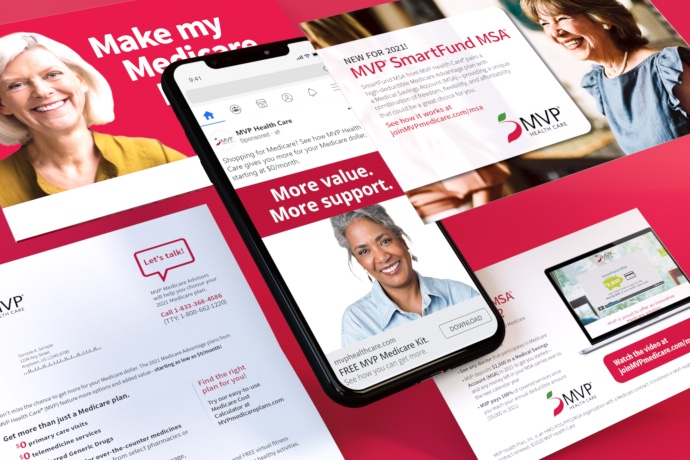“Test & Learn” Tips to Optimize Paid Social During Medicare AEP

Direct mail is still one of the most effective ways to reach seniors during Medicare’s Annual Election Period (AEP). But a multi-channel marketing campaign is essential for generating leads and competing during the AEP, including paid social media. Seniors are on social media now more than ever. According to the Pew Research Center, 40% of all those 65+ reported using social media in 2019, compared with just 2% in 2005. Sprout Social says that 65+ users are the fastest-growing group on Facebook and our 2020 Senior Media Habits Study found that 88% of seniors surveyed access social media daily, with Facebook being most popular platform.
Facebook ads typically have a low cost-per-lead (CPL), and in addition to being cost-effective, they are highly-targetable. Over the past few AEPs, we’ve noticed the number of leads from paid search and paid social media campaigns increasing quite a bit – up to about one-fourth to one-third of the total leads for some clients.
When you have lots of messages, it might seem like a good idea to have a deep library of creative, but too many variables may make it difficult to track the success of each, especially during the short AEP season. Here are a few “test & learn” tips we can share based on experience.
Test specific variables, one at a time.
Testing multiple variables at once, especially if you’re focusing on what helps generate more leads, can actually lead to inconclusive results. Variables can include copy, imagery selected, using video vs. a static image or carousel of images, using an in-line Facebook form or driving to a landing page. While there is no tried and true combination of variables, we recommend changing out one at a time.
Use the multiple text optimization feature to test text options.
Facebook’s multiple text optimization feature allows you to use multiple text options to highlight different aspects of your Medicare Advantage plan. This includes primary text (copy that appears above your creative), headline and link description. Facebook will show different combinations of text to different people based on what they’re more likely to respond to using an algorithm. This can speed up the testing of different types of messaging used in your ads.
Make sure your “back end” is in order before running ads.
The Facebook pixel is one tool you should start using right away. It is a code that you place on your website, and it collects data that helps you track conversions from ads, optimize ads, build targeted audiences for future ads, and remarket to people who have taken some kind of action on your website. Before you start running ads, test that you have properly installed the Facebook pixel on your website and it is tracking correctly. Need help? Facebook has a page dedicated to best practices for Pixel setup.
Use Google Analytics to help inform your ad results.
Using Google Analytics and Google UTM tags can help determine which of your ads are driving both actions and conversions. They are a great way to double-check your results from Facebook. Also, Google Analytics can provide additional information and key metrics such as time on page (how much time uses spend interacting with your website) or comparing behavior differences between ads seen on mobile and desktop.
Health plans should also consider using Facebook advertising as a way to reach New-to-Medicare and Medicare eligible beneficiaries all year ’round. We will discuss later on in a different blog post.









